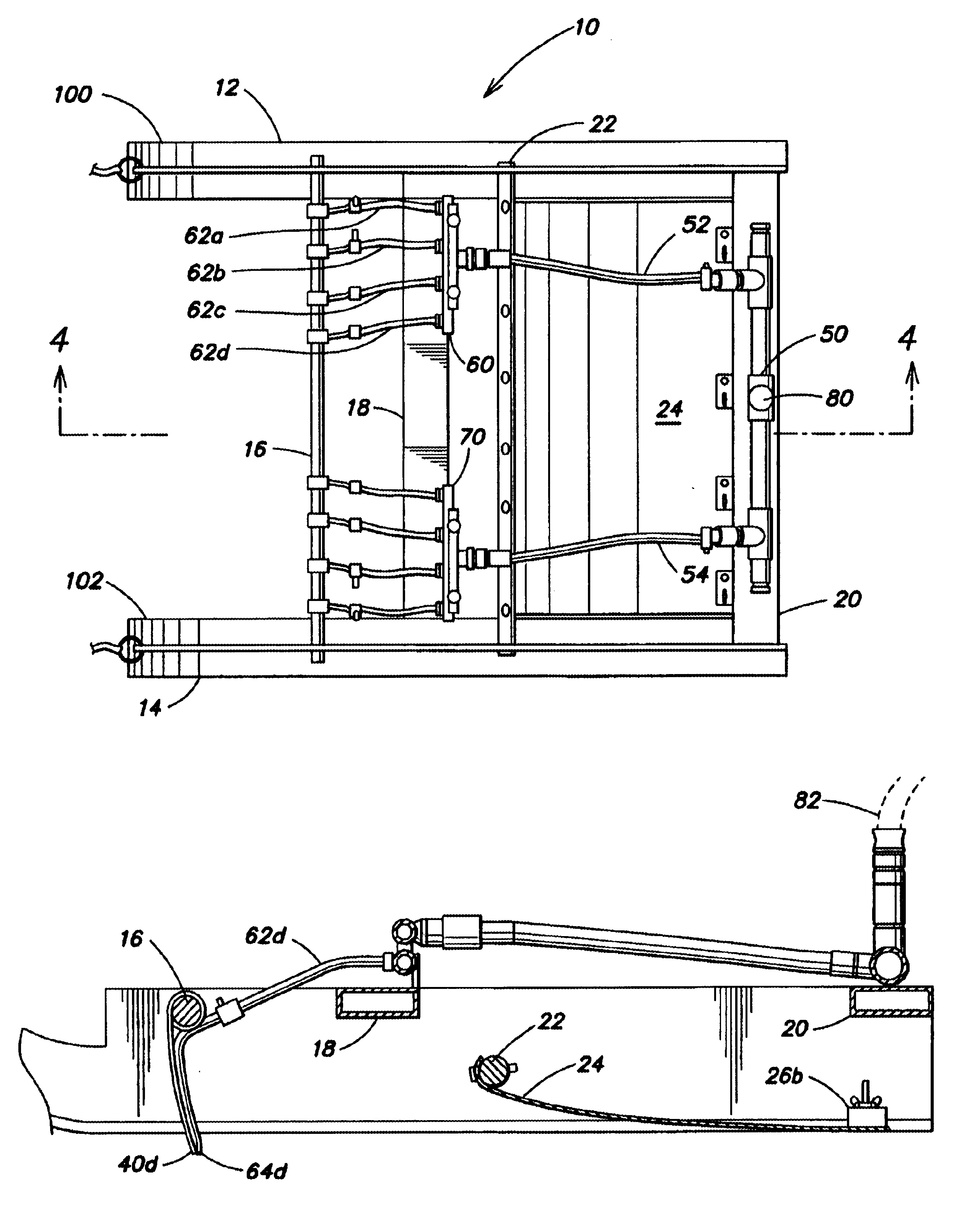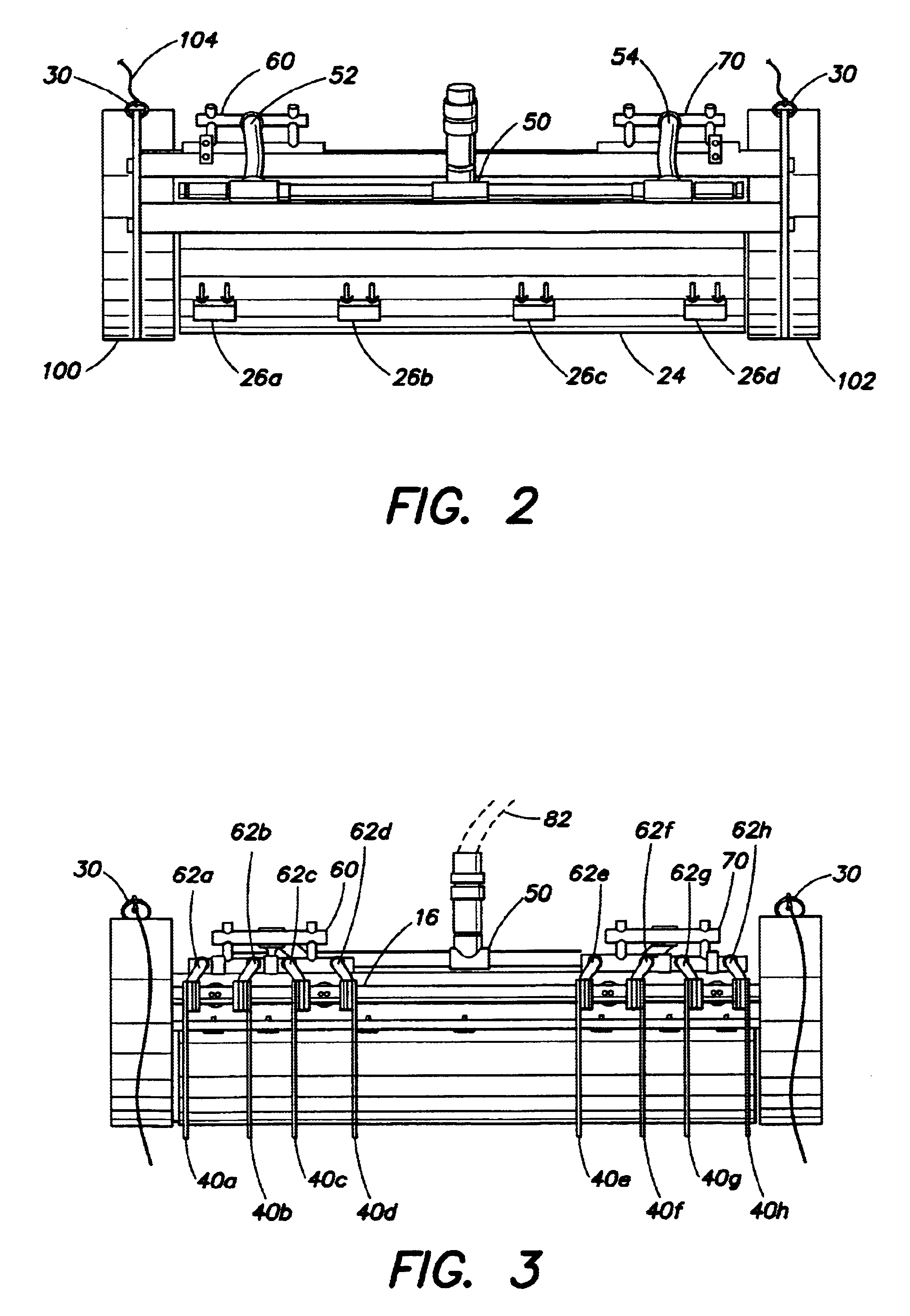Underwater seagrass seeding apparatus
a technology for seagrass and seeding apparatus, which is applied in the field of seagrass restoration, can solve the problems that the traditional restoration technique of transplanting whole plants from donor beds to restoration sites has not been able to keep up with the loss
- Summary
- Abstract
- Description
- Claims
- Application Information
AI Technical Summary
Problems solved by technology
Method used
Image
Examples
experiment 1
Two flow-through seawater tanks each measuring 5.8 m.times.:1.8 m.times.::1 m were used as the test tanks. One tank was lined with fine, higher organic (1.7%) sediment indicative of Narragansett Bay while the second was lined with coarse, low organic (0.5%) sediment indicative of Rhode Island Sound. Two seeding runs of approximately 1.5 meters in length took place in each tank. A total of 1000 seeds were to be planted for each run to yield a planting density of 1000 seeds m.sup.-2. Viable ungerminated seeds were selected and added to 500 ml of prepared gel matrix. The seed-gel matrix was pumped through tubing and followed by 1500 ml of unseeded gel to purge the lines. During tank trials the seeding sled was pulled through the tank using a hand winch secured to the tank wall. Speed and distance traveled were estimated using markers placed every 25 cm along the run. The test run was terminated when the majority of seeds had been cleared from the lines. At the end of each run all lines...
experiment 2
Four sites were selected to include a range of environmental conditions. These sites ranged from more energetic sites in Narragansett Bay to low energy sites in Ninigret Pond (Charlestown, R.I.). All sites selected were either in or adjacent to an existing eelgrass bed or previous eelgrass restoration site. Planting at a site where eelgrass already exists, would eliminate the question of whether water quality could sustain eelgrass growth and would allow for a better determination of the success or failure of the mechanized seeding technique. At each of the four sites a test plot was located using PVC stakes. At shallower sites the sled was towed manually while at deeper sites the sled was towed from the tending vessel. In this way we would have better control of the delivery rate and the speed at which the sled moved along the bottom. Divers visually monitored the seeding process. Hand signals were used to communicate and control the speed of the sled and the termination of each ru...
PUM
 Login to View More
Login to View More Abstract
Description
Claims
Application Information
 Login to View More
Login to View More - R&D
- Intellectual Property
- Life Sciences
- Materials
- Tech Scout
- Unparalleled Data Quality
- Higher Quality Content
- 60% Fewer Hallucinations
Browse by: Latest US Patents, China's latest patents, Technical Efficacy Thesaurus, Application Domain, Technology Topic, Popular Technical Reports.
© 2025 PatSnap. All rights reserved.Legal|Privacy policy|Modern Slavery Act Transparency Statement|Sitemap|About US| Contact US: help@patsnap.com



